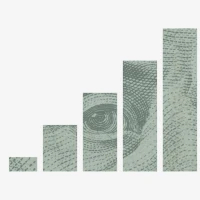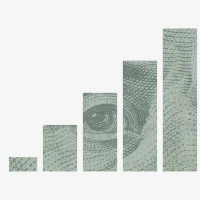Imagine unlocking the intricate world of mathematical visualization, where each line, each connection point represents a story—complex relationships, trend patterns, and the underlying science of decision-making. This is the domain of cycle graphs, a powerful tool wielded by experts to decode the enigmatic language of inequalities. Cycle graphs are not just about numbers and lines; they encapsulate a whole new level of understanding, one that offers invaluable insights into the mathematical and data-driven truths of our world.
In this masterclass, we shall delve into the secrets of cycle graphs and explore how they offer a panoramic view of inequalities in an interconnected environment. This journey will equip you with the knowledge to harness the full potential of these graphical depictions, allowing you to interpret and analyze complex data with newfound proficiency.
The Essence of Cycle Graphs
Cycle graphs represent a unique class properties of odd cycles graphs in the lexicon of mathematics and computer science. To the uninitiated, they may appear as simple circles or polygons, but there’s a subtle layer of complexity beneath their deceptive simplicity.
What Are Cycle Graphs?
A cycle graph is a type of graph that consists of a single cycle, meaning it is a closed loop with no repeating edges or vertices except for the starting and ending points, which coincide. This form of graph is an essential concept in graph theory and has varied applications, from network design to algorithm development.
Key Characteristics
- All vertices are connected in a closed loop
- Each vertex connects to exactly two other vertices
- There are no ‘dangling’ edges or disconnected vertices
Understanding these characteristics is pivotal when dealing improve cycling with wheel graphs inequalities, as they reflect constraints and relationships that must be carefully considered and balanced.
Unraveling Inequalities with Cycle Graphs
Inequalities go beyond simple equations—they are the mathematical expressions of the imbalance, where one quantity is not strictly equal to another but instead, greater or lesser than it. In graph theory for beginners theory, inequalities can be represented visually, and this is where cycle graphs excel.
The Visual Language of Inequalities
Odd cycle graph algorithms graphs offer a visual plateau where the abstract concept of inequalities becomes tangible. By mapping out constraints and relationships on a cycle graph, you can see at a glance where the disparities lie and how they interact.
How to Illustrate Inequalities on Cycle Graphs
Imagine marking the edges of a cycle graph with weights or values, representing different elements of an inequality. The vertices become junction points where comparisons are made. This visual representation can clarify the nature of the inequalities involved.
Navigating Complex Data Networks
In real-world applications, magic quadrant contract life cycle graphs serve as the backdrop for navigating complex data networks. They enable us to see patterns and irregularities that might be missed in a sea of numbers.
Applications of Cycle Graphs in Various Fields
- Economics: Tracking cycles of supply and demand
- Sociology: Analyzing the cyclical nature of social trends
- Operational Research: Optimizing routes and networks
Each of these fields benefits from cycle graphs’ ability to simplify and highlight the crucial aspects of their respective data landscapes.
Comparative Analysis Using Cycle Graphs
Cycle graphs gain an additional layer of utility when employed in comparative analysis. By juxtaposing two or more cycle graphs, one can discern disparities and commonalities that form the basis for insightful conclusions.
Creating a Comparison Chart or Table
When comparing cycle graphs, it’s effective to create a visual aid such as a chart or table. Let’s look at an example that underscores three crucial comparison points.
| Feature | Cycle Graph A | Cycle Graph B |
|---|---|---|
| Number of Vertices | 5 | 8 |
| Circuit Complexity | Simple | Complex |
| Inequalities Represented | Few, straightforward | Multiple, intricate |
Insights Gained from Comparative Analysis
- Cycle Graph A may represent a simpler system with fewer variables.
- In contrast, Cycle Graph B’s complexity could be indicative of a more complicated scenario where multiple inequalities are at play.
By drawing these parallels, one gains a clearer understanding of the underlying dynamics captured by the cycle graphs.
Mastering Interpretation and Analysis with Cycle Graphs
Interpreting and analyzing cycle graphs is not merely about recognizing patterns—it’s also about understanding what the patterns signify. This level of analysis requires expertise and a deep appreciation of the graph’s intricacies.
Strategies for Effective Interpretation
- Seek out patterns: Repetitions or irregularities can provide valuable clues.
- Consider the weights: The values assigned to edges can highlight key areas of inequality.
- Look for symmetry: Symmetry can suggest balance or equilibrium within the graph.
Advanced Interpretation Techniques
Delving further, one can apply sophisticated mathematical principles to draw out the hidden layers of meaning within cycle graphs. Using algebraic formulations and algorithmic methodologies can lead to a more profound grasp of the graph’s message.
Optimizing Decision-Making with Cycle Graph Inference
Cycle graphs can be more than just analytical tools; they can actively influence decision-making processes. By understanding the data represented on a cycle graph, one can make informed choices based on clear evidence.
Utilizing Graph Data to Guide Choices
Every vertex and edge on a cycle graph can serve as a data point for decision-making. By weighing the inequalities represented, decision makers can forecast outcomes and determine the most advantageous course of action.
The Role of Cycle Graphs in Policy and Strategy
- Policy Development: Governments can employ cycle graphs to visualize the potential impact of policies.
- Business Strategy: Companies can map out competitive landscapes and identify strategic opportunities.
The Art of Communicating Insights from Cycle Graphs
Communicating the insights garnered from cycle graphs is an art form, requiring the translator to convey complex ideas in an accessible manner. It is crucial for experts to articulate findings to diverse audiences, ensuring comprehension and facilitating informed dialogue.
Techniques for Effective Communication
- Use clear, concise language: Avoid jargon and explain terms when necessary.
- Employ visual aids: Graphs, charts, and illustrations can bridge the gap between complexity and understanding.
- Storytelling: Weave a narrative around the data to make the information relatable and memorable.
Crafting a Narrative from Data
Sift through the data, picking out the most significant points that will engage your audience. By crafting a story around the highs and lows, the patterns and outliers, you turn raw data into a compelling tale of discovery.
The Cycle Graph Masterclass: A Conclusion
In this comprehensive exploration of cycle graphs, we have uncovered their potential to elucidate the often obscure world of inequalities. From their foundational structure to their use in high-stakes decision-making, cycle graphs stand as a testament to the power of visualization in understanding complexity.
By mastering cycle graphs, you gain a versatile tool that not only demystifies inequalities but also empowers you to communicate and capitalize on the insights they provide. Whether you’re a student of mathematics, a data analyst, or a decision-maker, embracing the full spectrum of cycle graphs can open up a world of clarity and opportunity.










